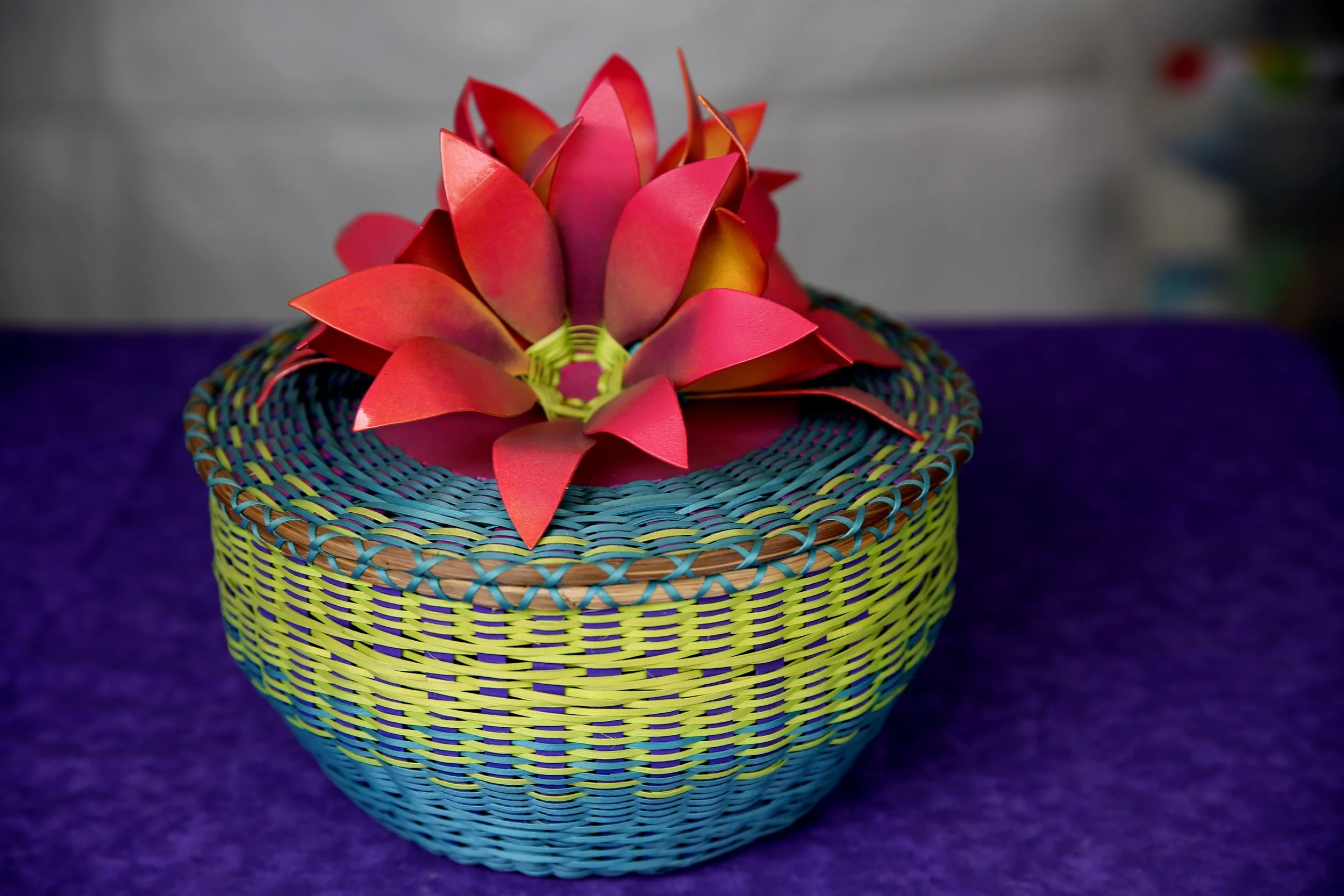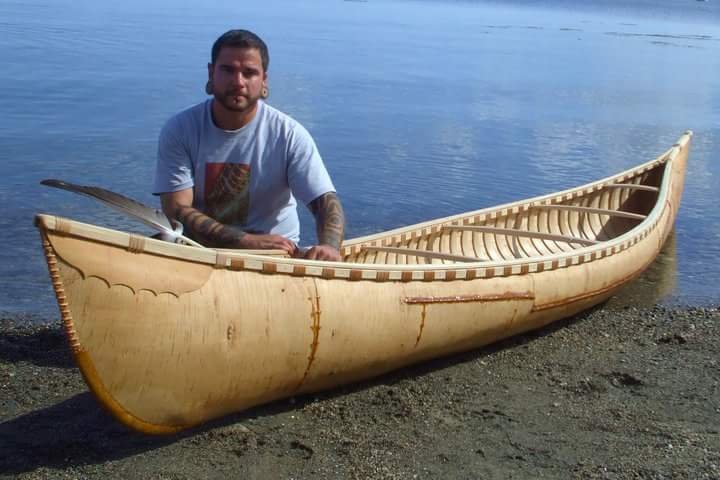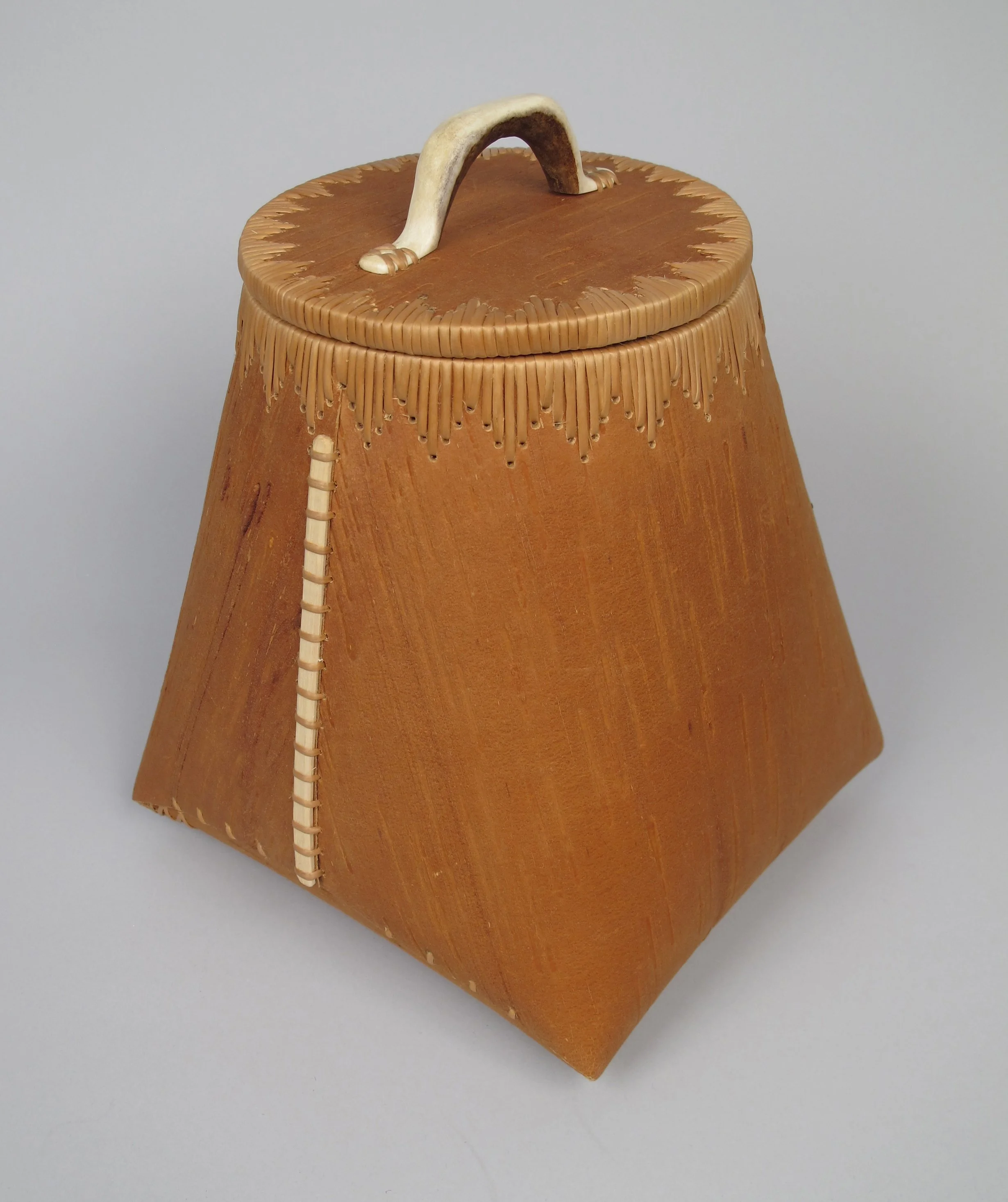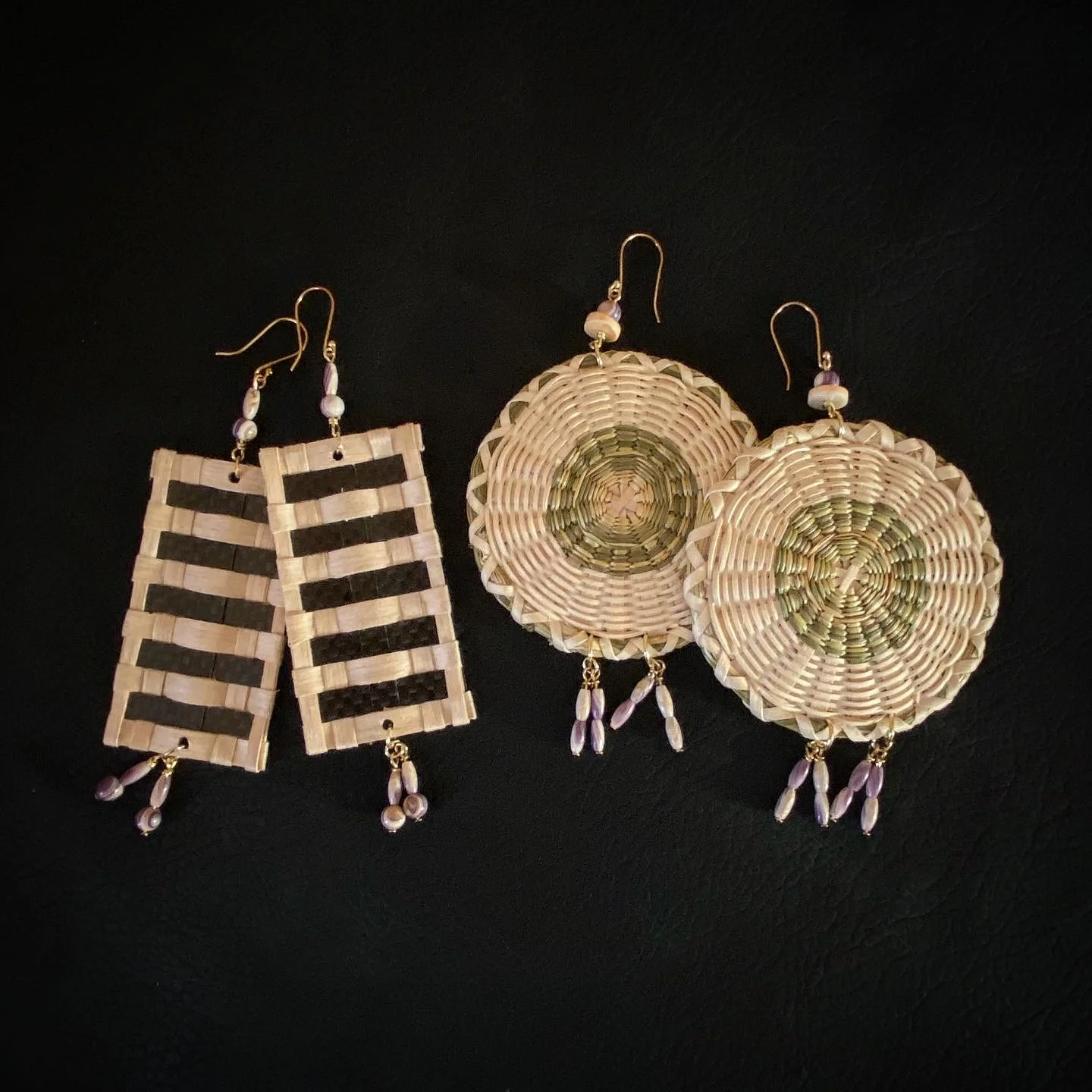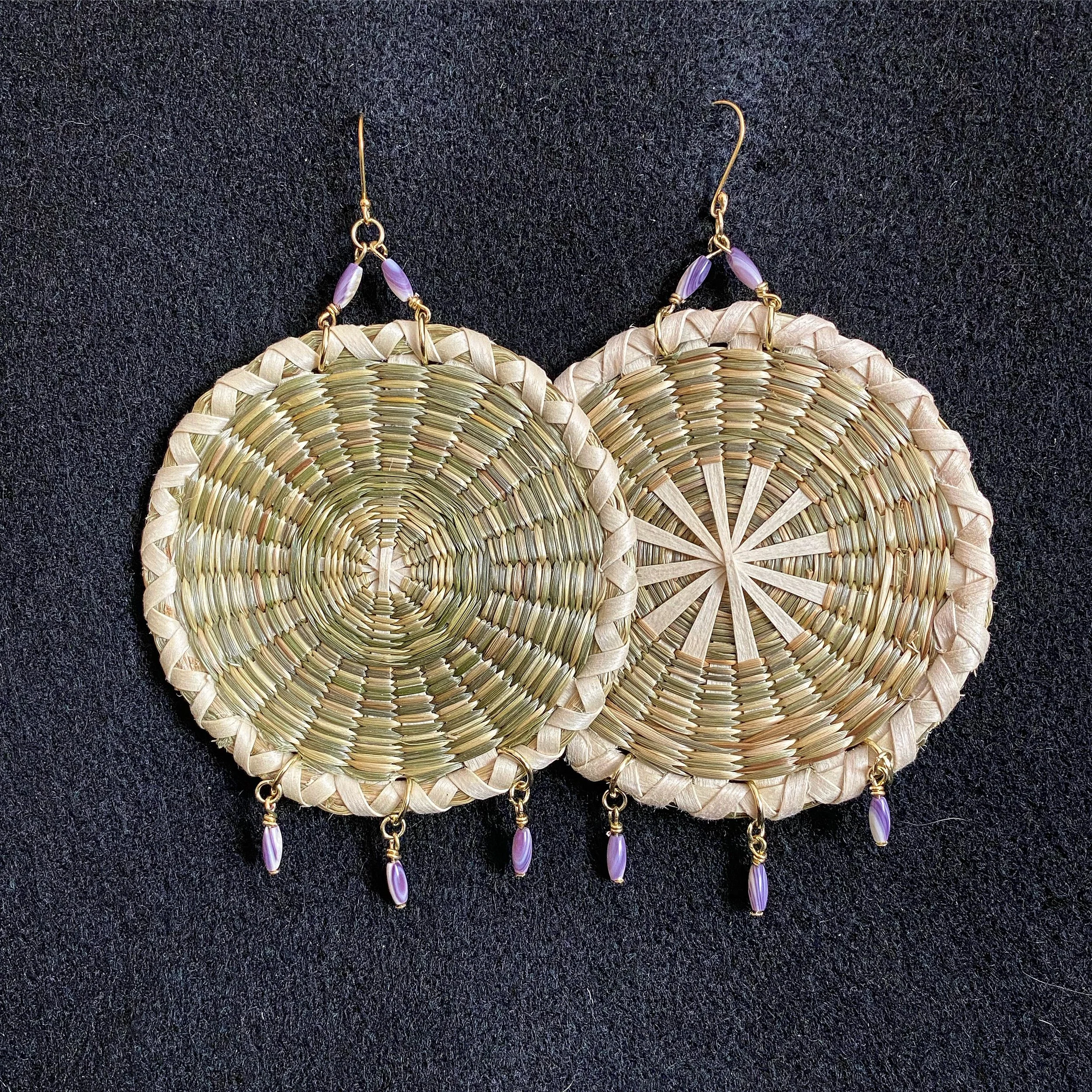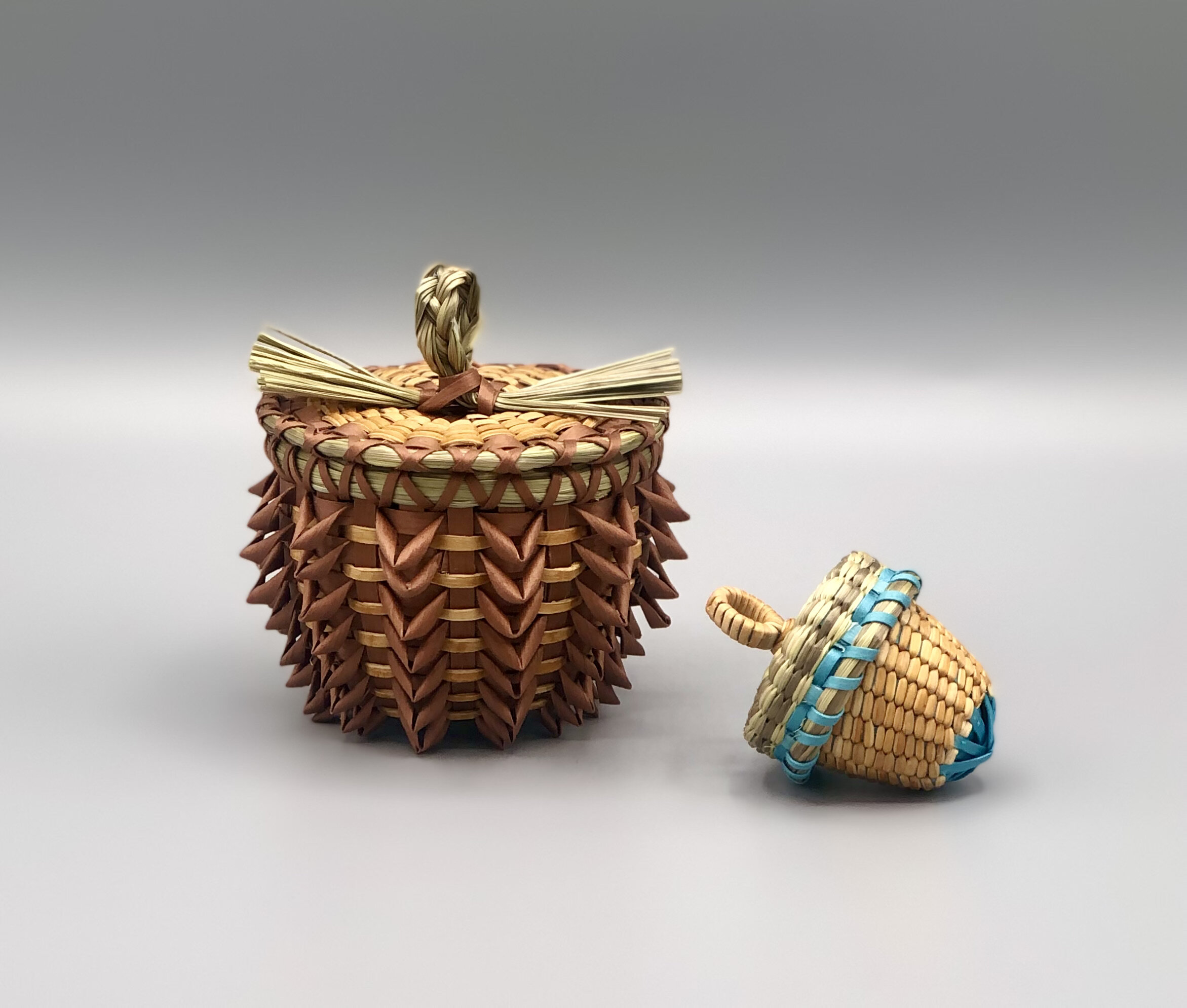Eric Otter Bacon
/TRIBAL AFFILIATION: Passamaquoddy
MEDIUM: Basketry, Woodwork
ARTIST STATEMENT
As a toddler, my mother said I was already constantly making hand-drawn replications of sneakers and boots, particularly the tread patterns. Woodworking and basketmaking soon followed at around age 5-6 with the influences from my maternal grandfather, a Grand Lake wood strip canoe builder, my father a wood and bone/antler carver, my uncle who steam bent wood into dog sleds, and many basket makers on the reservation. At age 16, I began working with Loyd Owle, a well-known Cherokee artist at the Unity Youth Treatment Center in North Carolina, learning leather work and stone carving, amongst other Native arts. While attending treatment there, I learned what it was to value life, and this is where my first pieces of Native art were sold. For many years following, I pursued a tattoo apprenticeship, focusing much of my artwork on the industry and doing much study and research on indigenous patterns and designs from around the world. 2004 is when basket making was when I had taken up professionally. Within the next few years, I attended multiple Native markets around New England, starting to enter and win placement in those art competitions. Before completing the first decade of professional basket making my work had won many ribbons at numerous Native art market competitions and in the collections of major museums nationwide. During this time, I started working closely with birch bark canoe builders David Moses Bridges and Steve Cayard, building 5 different bark canoes with multiple Native communities to learn and share the knowledge of traditional canoe construction and material gathering/preparation. Moving forward, I'd like to continue sharing and teaching the acquired knowledge of traditional arts, inspiring others to find value and hope within themselves so that they may have some of the tools needed to continue in a positive, meaningful life.

